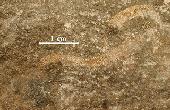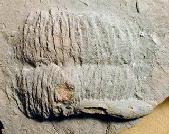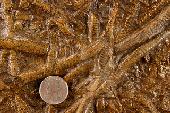|
 See More Images See More Images

Unknown
© 2004 UCMP

Rusophycus
© 2001 Richard Schrantz

Arthrophycus
© 2003 Thomas Kammer
|
What are Invertebrate traces? Invertebrate traces include the impressions of activities, such as feeding, burrowing, boring, resting, walking, and crawling. Most of these traces were made in soft sediments like mud or sand and can now be seen in sandstones, shales, and limestones throughout the Phanerozoic. Other trace fossils, particularly boring or feeding traces, can be found on harder substrates. While most invertebrate trace fossils were made in marine environments, some are found in rocks representing terrestrial environments, such as termite mounds or insect marks on plants. The oldest definitive invertebrate trace fossils come from Early Cambrian rocks. First known fossil occurrence: Cambrian. Last known fossil occurrence: Quaternary. This group has living relatives. |
Fossils through time:
Choose a time period to see what life was like:
|
|